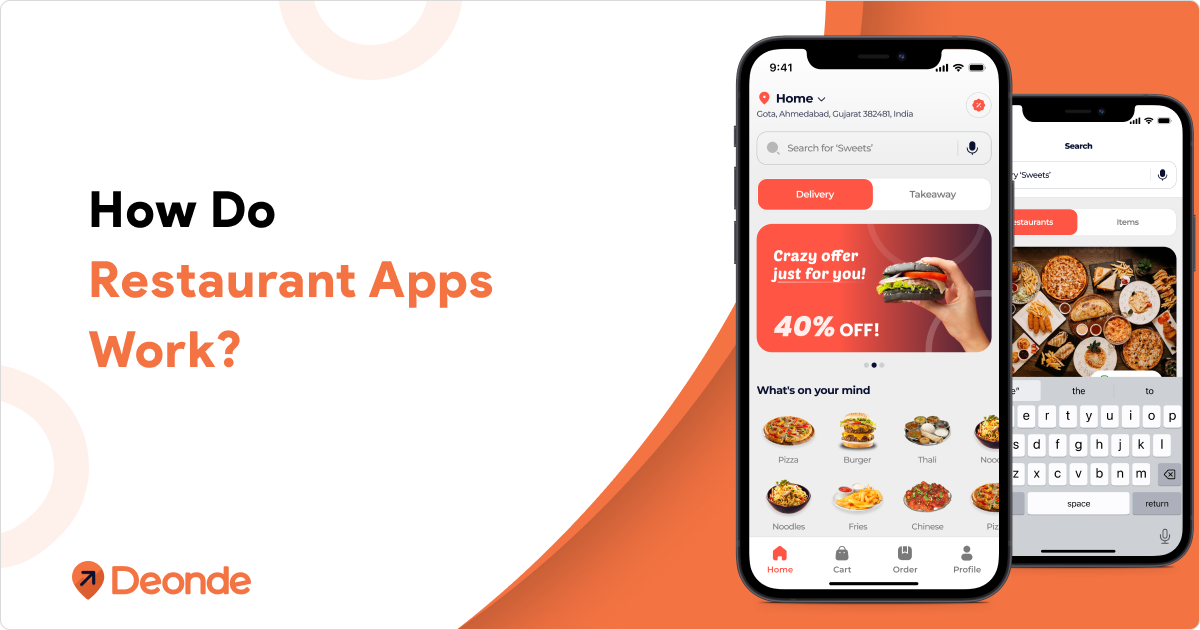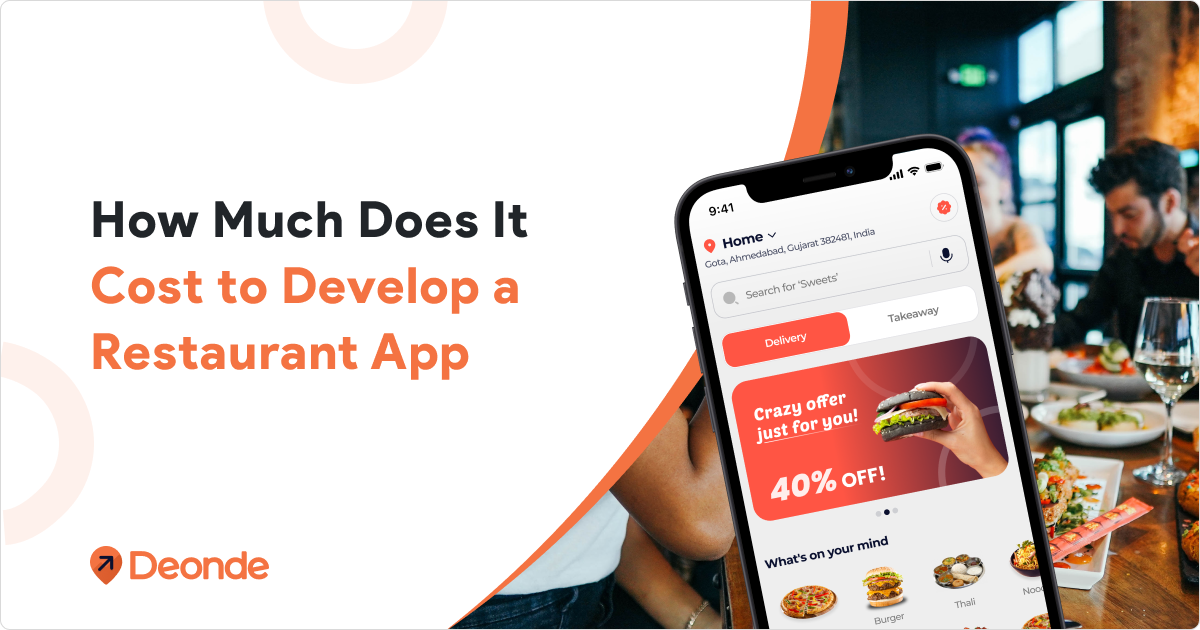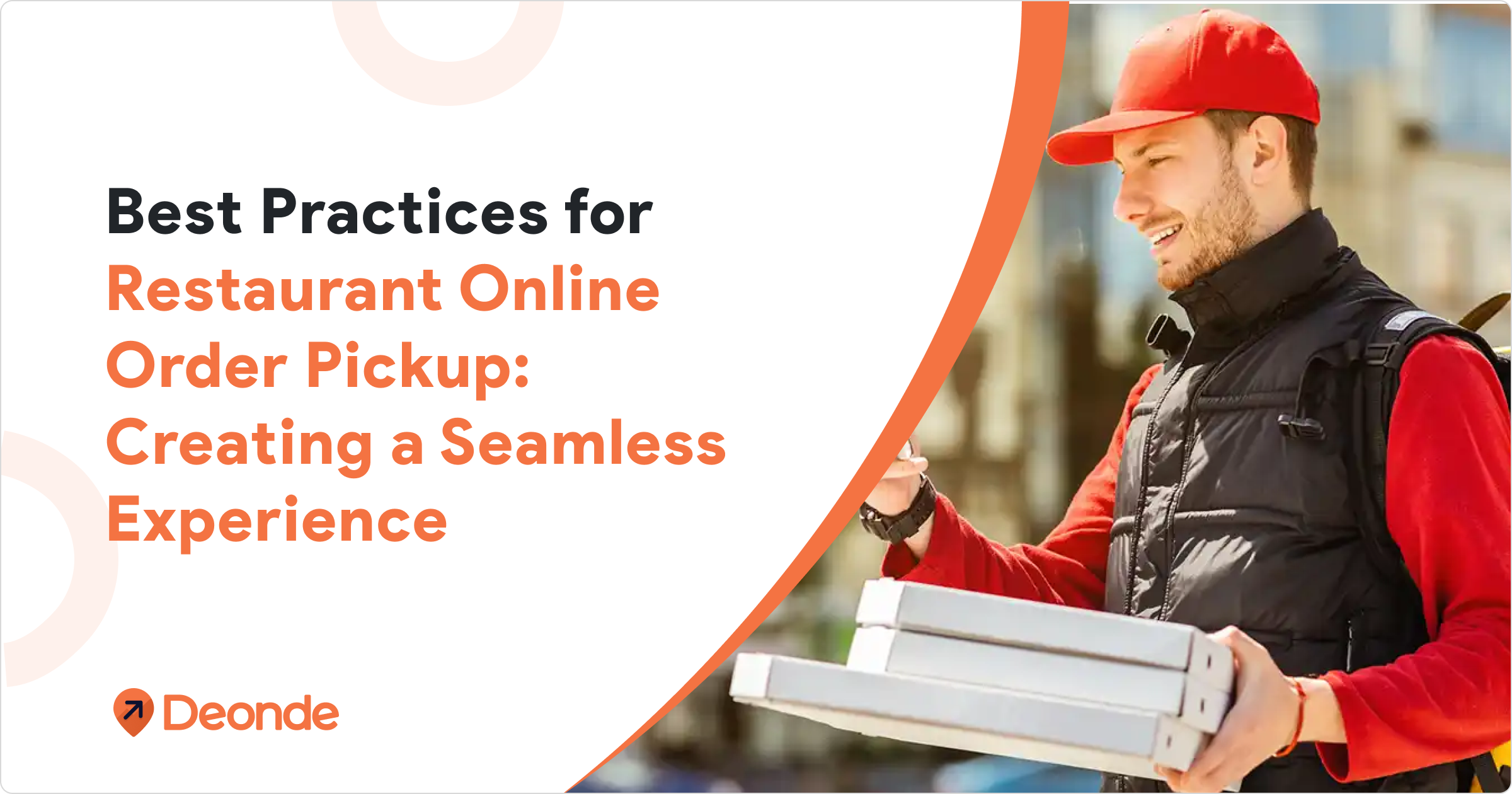Running a restaurant today isn’t just about serving good food anymore. The digital revolution has completely transformed how customers interact with restaurants — online ordering is now at the center of it all. But simply offering an online menu isn’t enough. If you want to thrive, you need smart and effective restaurant online order fulfillment strategies.
Imagine a customer orders your signature burger online, but it arrives cold, messy, and 20 minutes late. Will they order again? Probably not. Poor order fulfillment can destroy your reputation faster than a bad review.
So, how do you ensure your restaurant is not just taking online orders, but mastering their fulfillment? Let’s dive deep into actionable strategies that will elevate your operations and keep your customers coming back for more.
Why Online Order Fulfillment Matters for Restaurants?
The importance of efficient online order fulfillment cannot be overstated. According to recent studies, over 60% of consumers prefer ordering food online rather than dining in. This shift in consumer behavior presents both challenges and opportunities for restaurant owners. By implementing effective fulfillment strategies, you can improve customer satisfaction, increase order accuracy, and ultimately boost your bottom line.
Poor fulfillment, on the other hand, leads to frustrated customers. Late deliveries, incorrect orders, or a lack of communication can tank your reviews and drive customers to competitors. In fact, studies show that 80% of customers won’t reorder from a restaurant after a bad delivery experience. That’s a huge loss in a competitive market.
Key Components of Effective Fulfillment Strategies
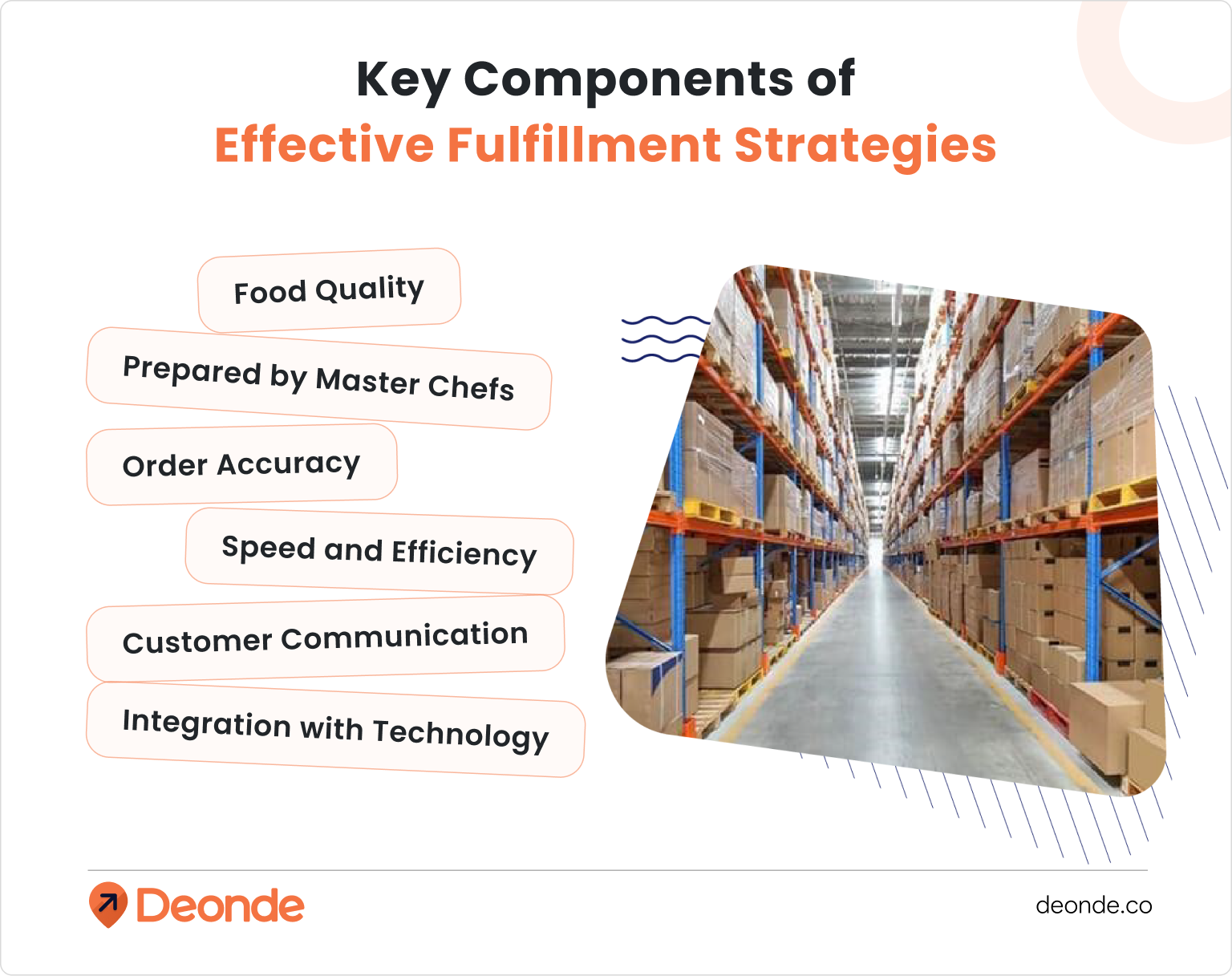
Before diving into specific strategies, let’s break down the core elements of successful restaurant online order fulfillment strategies. These pillars ensure your operations run smoothly and customers stay satisfied.
Food Quality
Exceptional food quality sets your restaurant apart in the competitive online market. Use fresh, high-quality ingredients, maintain consistent cooking standards, and invest in secure, insulated packaging to ensure meals arrive hot and delicious, delighting customers and encouraging repeat orders.
Prepared by Master Chefs
Dishes crafted by expert chefs elevate your online orders into memorable dining experiences. Their attention to detail and culinary expertise ensure every meal reflects your brand’s excellence, fostering deep customer loyalty and driving retention through consistently outstanding food..
Order Accuracy
Nothing frustrates a customer more than receiving the wrong order. Accuracy starts with a clear, user-friendly ordering system and ends with a thorough quality check before the food leaves your kitchen. Double-checking orders reduces errors and builds trust.
Speed and Efficiency
In the world of online ordering, speed is king. Customers expect their food to arrive quickly, often within 30-45 minutes. Streamlining kitchen workflows, optimizing delivery routes, and using technology can save precious minutes off fulfillment times.
Customer Communication
Transparency keeps customers happy. Real-time order updates, estimated delivery times, and proactive communication about potential delays demonstrate to customers that you value their time. A simple text or app notification can make all the difference.
Integration with Technology
From point-of-sale (POS) systems to delivery management software, technology is the backbone of efficient fulfillment. Integrating your online ordering platform with your operations ensures a smooth flow from order to delivery.
By focusing on these components, you set the stage for restaurant delivery optimization and a stellar customer experience.
Order Fulfillment Process: How Does It Work?
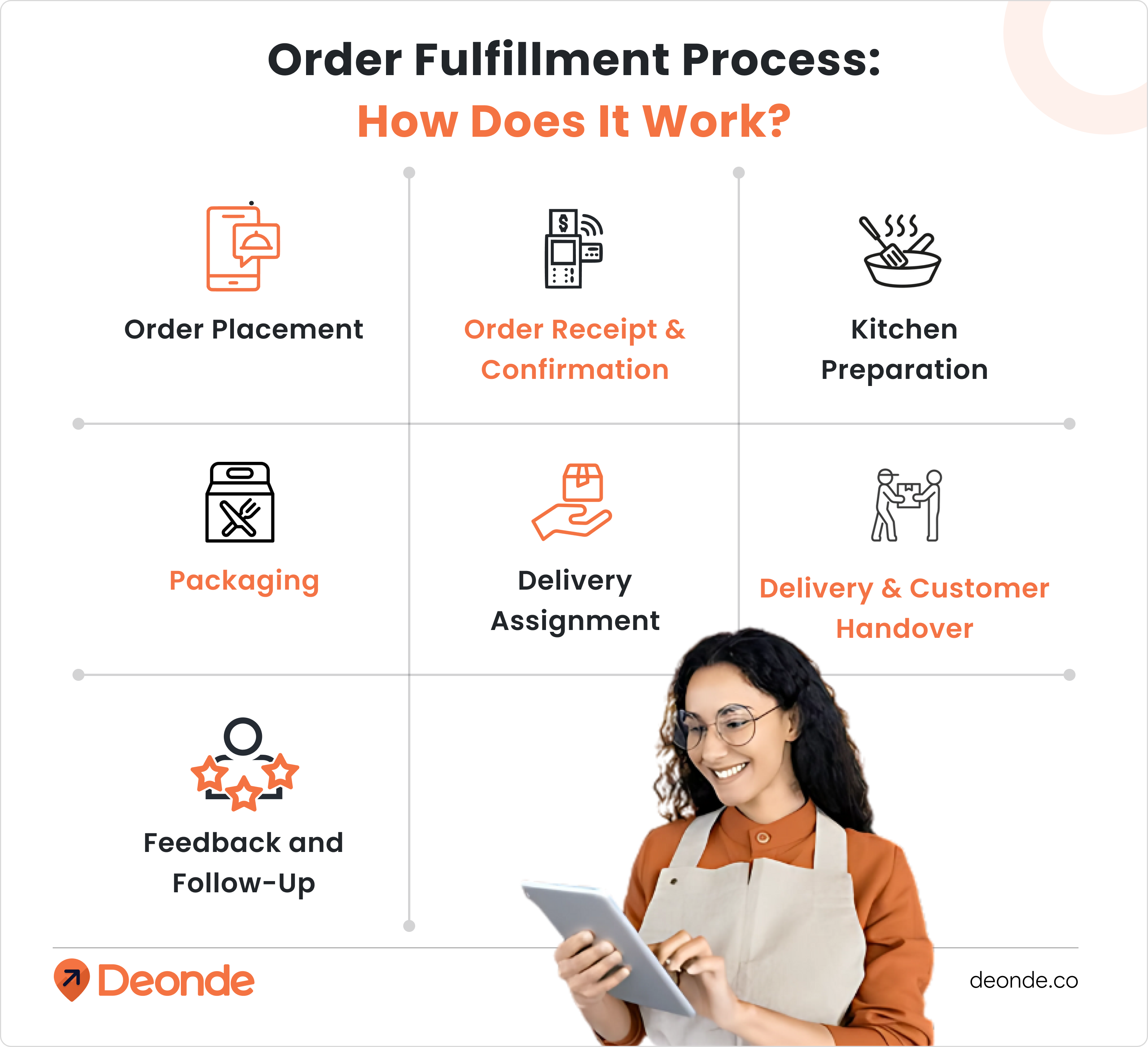
Understanding the online order fulfillment process is the first step to optimizing it. This process involves several stages, each critical to delivering a great customer experience. Here’s a breakdown of how it works:
1. Order Placement: The customer places an order through your restaurant’s website, mobile app, or a third-party platform like Zomato or Swiggy. The order includes details like menu items, special instructions, and delivery address.
2. Order Receipt and Confirmation: The order is received by your restaurant’s system, often through a restaurant order management software. The system confirms the order with the customer via email, SMS, or app notification.
3. Kitchen Preparation: The order is sent to the kitchen, typically displayed on a kitchen display system (KDS). Staff prepare the food according to the customer’s specifications, ensuring accuracy and speed.
4. Packaging: Once prepared, the food is carefully packaged to ensure its quality remains intact during transit. This includes using appropriate containers, sealing items securely, and adding any extras like utensils or condiments.
5. Delivery Assignment: The order is assigned to a delivery driver, either in-house or through a third-party service. Tools like the driver app optimize this step by selecting the best driver based on location and availability.
6. Delivery and Customer Handover: The driver delivers the order to the customer’s location. Real-time tracking and notifications keep the customer informed about the delivery status.
7. Feedback and Follow-Up: After delivery, customers may leave feedback or ratings. Restaurants can use this data to improve future orders and address any issues promptly.
Each step must be seamless to avoid delays, errors, or customer dissatisfaction. By understanding this process, you can identify areas for improvement and implement the right strategies.
Top Restaurant Online Order Fulfillment Strategies to Implement in 2025
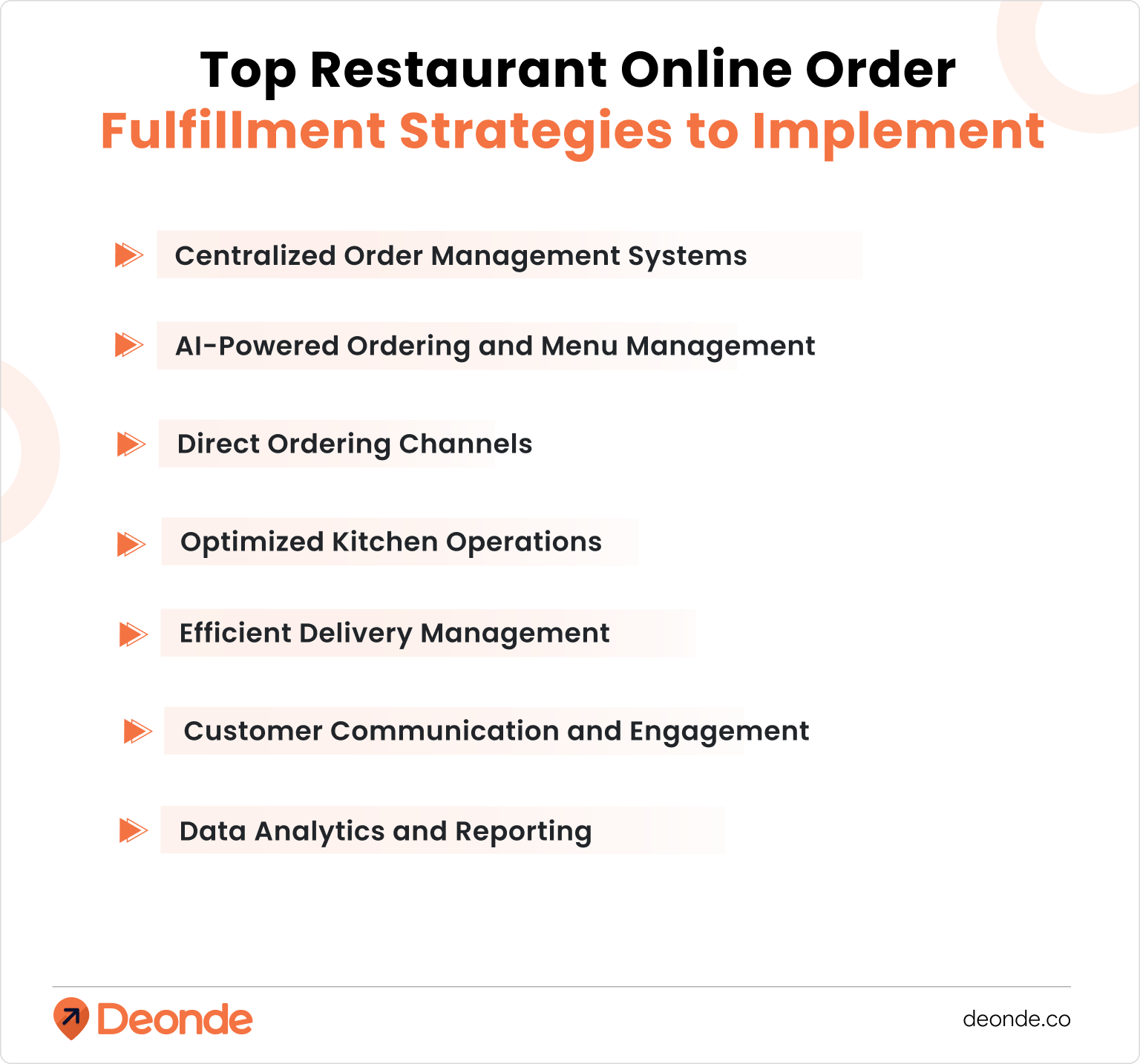
In 2025, restaurants aiming to thrive in the online order fulfillment landscape will need to adopt innovative and efficient strategies. Here are some top strategies to consider:
Centralized Order Management Systems:
- Consolidate Orders: Integrate all online ordering channels (third-party delivery platforms, direct website/app orders, phone orders) into a single system. This reduces the chaos of managing multiple tablets and streamlines the workflow.
- Real-time Visibility: Gain a unified view of all incoming orders, their status, and estimated preparation times. This helps in better kitchen management and accurate customer communication.
- Menu Synchronization: Ensure your menu is consistent across all platforms, updating pricing and availability in one place to avoid discrepancies and customer frustration.
AI-Powered Ordering and Menu Management:
- Automated Order Taking: Explore voice ordering and AI-driven chatbots for taking orders, especially during peak hours, to reduce phone traffic and free up staff.
- Smart Menu Suggestions: Implement AI systems that analyze customer data and order history to provide personalized menu recommendations, potentially increasing order values.
- Dynamic Menu Adjustments: Utilize AI to adjust pricing and item availability in real-time based on factors like inventory, demand, and time of day.
Direct Ordering Channels:
- Custom Restaurant Website and App: Invest in a user-friendly, branded online ordering platform that allows you to keep customer data, build loyalty, and avoid third-party commission fees.
- QR Code Ordering for Dine-In and Takeaway: Enable customers to easily place orders by scanning a QR code, reducing the need for physical menus and staff interaction for order taking.
Optimized Kitchen Operations:
- Kitchen Display Systems (KDS): Implement digital screens in the kitchen to display orders in real-time, improving order accuracy and communication between the front and back of house.
- Order Prioritization: Utilize systems that can prioritize orders based on factors like delivery time or customer urgency.
- Integration with Inventory Management: Connect your ordering system with inventory management software to track ingredient availability and prevent selling out-of-stock items online.
Efficient Delivery Management:
- Route Optimization Software: Employ AI-powered route optimization tools to plan the most efficient delivery routes, considering factors like traffic, distance, and order priority, leading to faster delivery times and reduced costs.
- Real-time Driver Tracking: Provide customers with real-time updates on their order status and driver location for enhanced transparency and satisfaction.
- In-house vs. Third-Party Delivery Assessment: Carefully evaluate the costs and benefits of maintaining an in-house delivery fleet versus relying on third-party services, or a hybrid approach, based on your business needs and scale.
Customer Communication and Engagement:
- Automated Updates: Send automated SMS or email notifications to customers regarding order confirmation, preparation updates, and delivery status.
- Built-in Messaging: Facilitate direct communication between customers and the restaurant or delivery driver to address queries or special instructions.
- Loyalty Programs and Personalized Marketing: Leverage customer data from direct ordering channels to create targeted promotions, discounts, and loyalty rewards to encourage repeat business.
Data Analytics and Reporting:
- Performance Monitoring: Utilize dashboards to track key metrics like order volume, peak hours, popular items, delivery times, and customer feedback across all online channels.
- Identify Areas for Improvement: Analyze data to identify bottlenecks in your fulfillment process, understand customer preferences, and optimize your online ordering strategy.
By implementing these strategies, restaurants in 2025 can enhance their online order fulfillment efficiency, improve customer satisfaction, and ultimately drive more revenue in the competitive digital landscape.
Case Study: How Chowman Boosted Fulfillment
Chowman, a popular restaurant chain, struggled with managing orders from multiple platforms. Delays and errors were hurting their reputation. By adopting Deonde’s SaaS-based solution, they:
- Integrated all orders into one dashboard.
- Used real-time analytics to optimize staffing and inventory.
- Reduced delivery times by 20% with route optimization.
The result? A 30% increase in customer satisfaction and a spike in repeat orders. Read the full Chowman case study for more insights.
Conclusion
Mastering online food order fulfillment strategies is crucial for thriving in the competitive food industry. By understanding the order fulfillment process and implementing strategies like streamlining processes, optimizing delivery, leveraging data, and prioritizing customer communication, you can create a seamless experience that keeps customers coming back. Companies like Deonde make it easier to implement these strategies without breaking the bank.
Ready to take your restaurant’s online ordering to the next level? Start by evaluating your current fulfillment process and exploring tools that fit your needs. With the right strategies, you’ll boost efficiency, delight customers, and grow your business in 2025.
FAQs about Restaurant Online Order Fulfillment Strategies
Q1: What is the biggest challenge in online order fulfillment for restaurants?
A1: Managing speed and accuracy without compromising in-house operations is the biggest challenge.
Q2: How can technology improve order fulfillment?
A2: Tech tools like POS integrations, KDS systems, and real-time delivery tracking streamline operations, minimize errors, and enhance customer experience.
Q3: Is it better to manage delivery in-house or outsource it?
A3: It depends. In-house delivery offers more control over the customer experience, but third-party platforms offer wider reach.
Q4: How important is packaging for online orders?
A4: Extremely important. Good packaging ensures food arrives hot, fresh, and presentable, significantly affecting customer satisfaction.
Q5: Should I offer promotions for online orders?
A5: Yes! Targeted promotions like free delivery, discounts on first orders, or loyalty rewards encourage more frequent online purchases.



